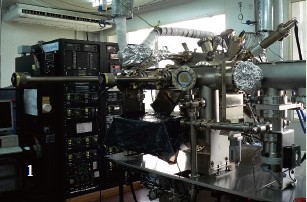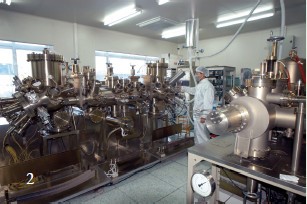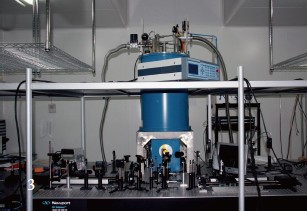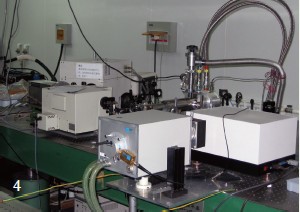The State Key Laboratory for Superlattices and Microstructures (previously known as the National Laboratory for Superlattices and Microstructures) was founded in 1988. The director of the laboratory is Prof. LI Shushen. The Academic Committee of the laboratory, headed by Prof. ZHENG Houzhi, an academician of the Chinese Academy of Sciences (CAS), consists of 16 prominent scientists.
There are 32 members in the laboratory, including 3 CAS academicians, 26 full and associate professors, 2 senior engineers, 1 administrative staff. During the last two decades, 8 members were awarded the National Funds for Distinguished Young Scholars.
The research areas of the laboratory include physics and the application of low-dimensional quantum structures, fundamentals of solid-state quantum computing, and semiconductor spintronics. In 2006, the laboratory received " the Science Fund for Creative Research Groups" supported by the National Natural Science Foundation of China. Prof. HUANG Kun, was awarded "the National Supreme Award of Science and Technology of China" in 2001. Since 2000, the laboratory has been awarded "the Second Grade National Prize of Natural Sciences in China" three times.
During the past decades, the laboratory has undertaken more than 30 national scientific research projects (including 973-projects and 863-projects), which are supported by the Chinese Ministry of Science and Technology, the National Natural Science Foundation of China, and the Chinese Academy of Sciences.
The laboratory operates doctoral, master programs and postdoctoral stations. At present, the laboratory has about 100 graduate students and postdoctoral researchers.
Research Equipment
Research facilities in SKLSM include several research platforms, such as molecular-beam-epitaxy systems for material growth, measurement systems for magnetic properties and photoelectromagnetic properties, research platform for optical properties (photoluminescence, Raman, timeresolved,Faraday/Kerr rotation and high pressure) in semiconductors, single photon techniques in visible and near-infrared regions, analysis systems for radio-frequency signals and semiconductor process platforms for electronic and optoelectronic devices.

1 Molecular-beam-epitaxy system for GaAs-based low-dimensional structures

2 Molecular-beam epitaxy system(V80) for magnetic semiconductors

3 Time-resolved pump-probe Faraday/Kerr rotation system

4 Ultra-fast time-resolved photoluminescence system
